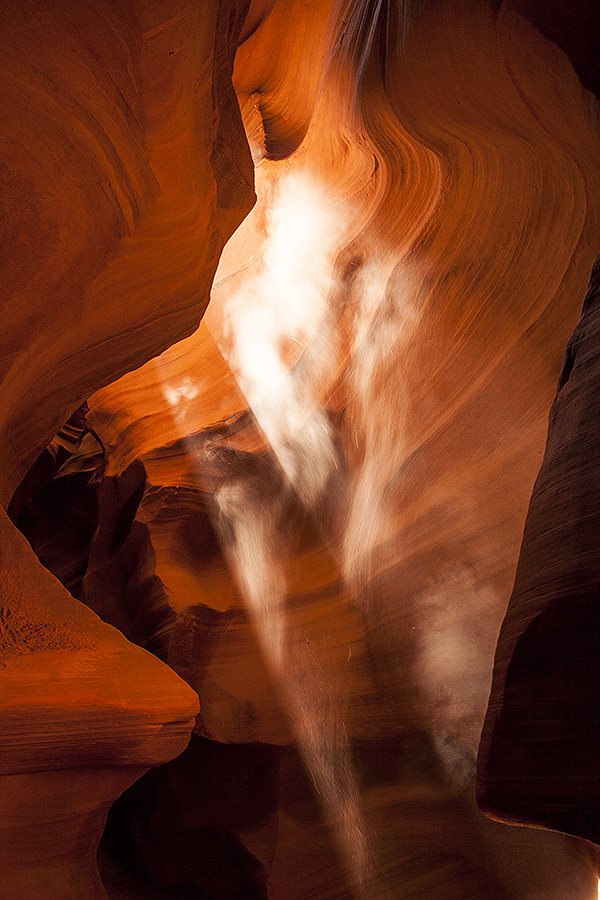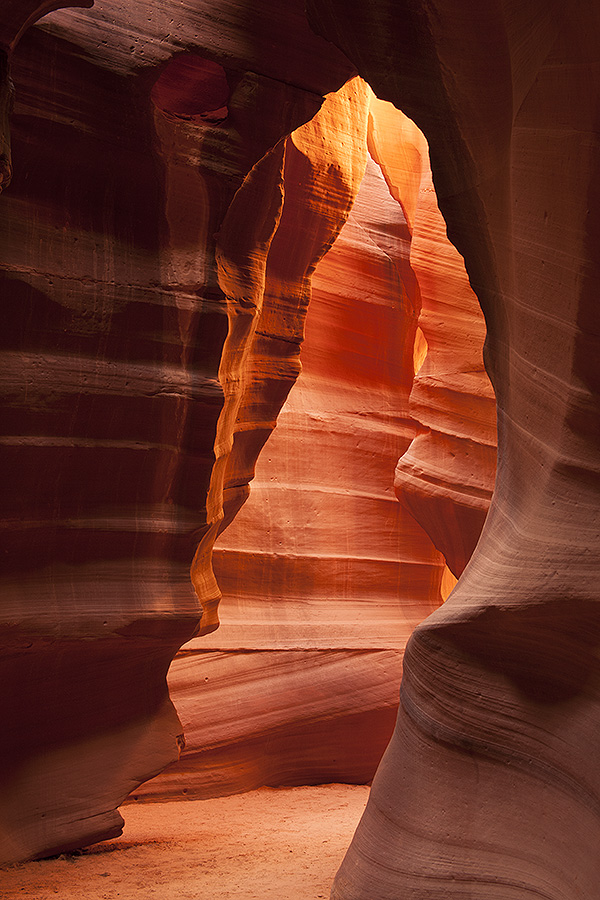

Upper Antelope Canyon, AZ, USA
Near the end of my trip in the American Deserts I photographed the slot canyon at Upper Antelope Canyon on Navajo Nation land. The Navajo name for this area is Tse' bighanilini, "the place where water runs through rocks". For thousands of years the occasional rain water has been slowly, artfully carving these canyons.
These slot canyons are deep, narrow paths that water has sculpted through the sandstone, up to 120 feet deep and in places only a couple feet wide. I had on a pack on my back and at times I could not turn around without first taking the pack off, or moving forward into a wider section of the canyon.
The canyon is mostly in the dark. Exposures are typically 15-30 seconds long before enough light comes through to make an image. But the colors are rich and lovely with golds and reds of the sandstone mixing with shades of purple in the shadows.
Around noon the angle of the sun is almost directly overhead and there are spots where shafts of light penetrate all of the way down to the floor of the canyon. This image has particles of dust captured in the the beams of light, the path of the moving powder dancing with the swirling lines in the rock.
I made this while standing in a darker part of Upper Antelope Canyon, shooting towards a chamber that was getting direct sun light. When you look towards the luminous light etching the sandstone walls you can almost feel the glow of the rays, each layer of walls getting warmer and warmer.
Think about how long it took water to make this. This is in the desert after all, water is achingly rare here. There would be entire decades when hardly a drop of water would pass through the canyon.
And then finally heavy clouds would pass over, open up and a storm would hammer the desert with water falling faster than the parched ground could soak it up. The water would follow the contours of the land, gaining speed and volume and power, transformed into instruments of sculpture.
Like a chisel, the water would pound into the soft spots of the sandstone, opening the canyon a little wider, a little deeper. Like a scutch hammer, the water would comb and texture the sandstone walls. And then Like sand paper, the loosened sand would join the water and polish the canyon wall. And in a flash the flood would be over, and the sculptor would wait years before picking up tools and carving the canyon again.
There is no other sculptor like water. It carves the landscape at a pace and a scale that no one can match. And it creates unparalleled beauty.
When I look at the sandstone walls in the canyon and see the flowing lines and the contour curves and the standing waves I can actually see what the water has been sculpting over all of these thousands of years... its a self portrait.
These images are a part of an article for next winters edition of the digital publication Nature of the Wild on ways that water has carved the desert.
|


